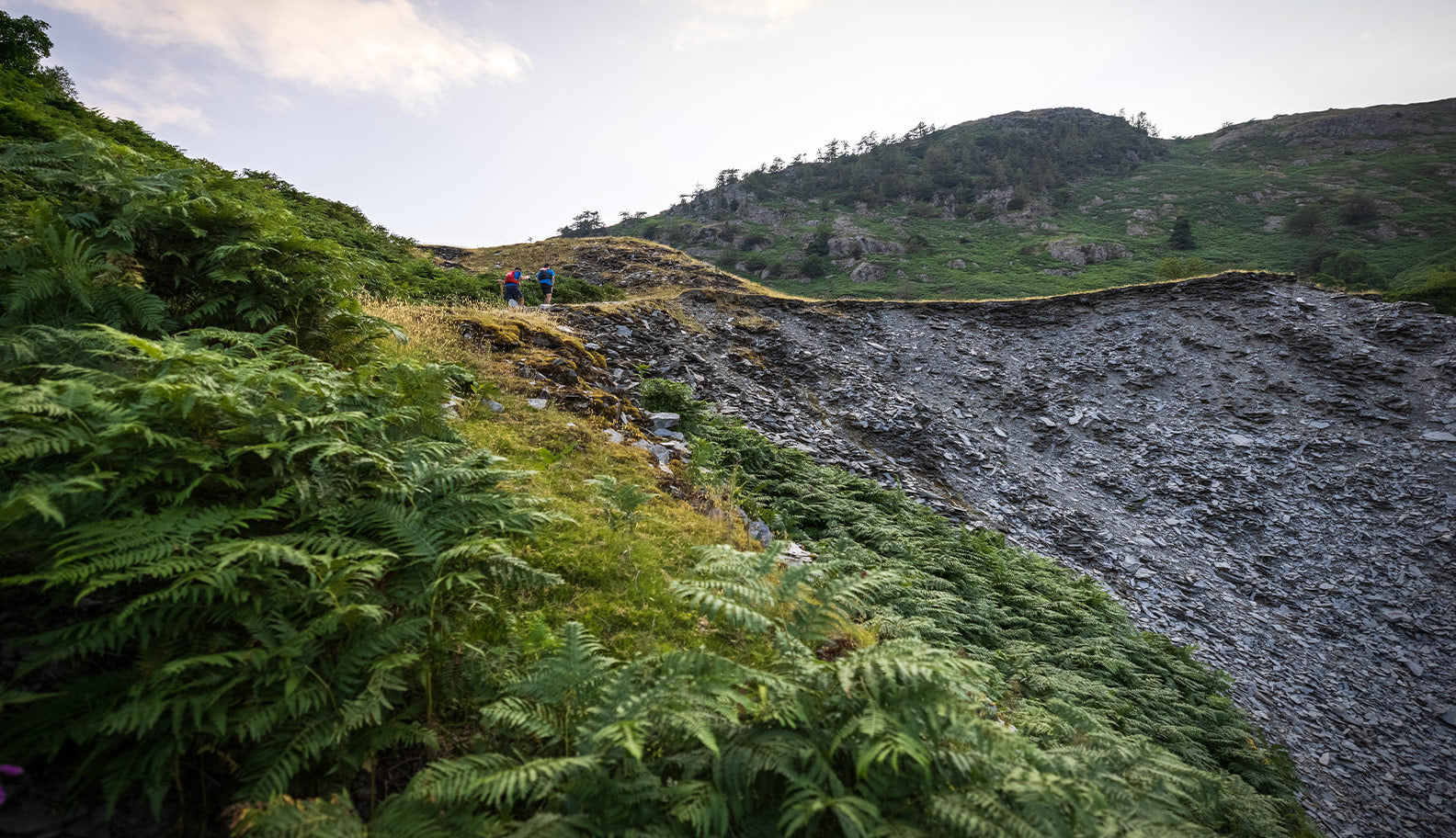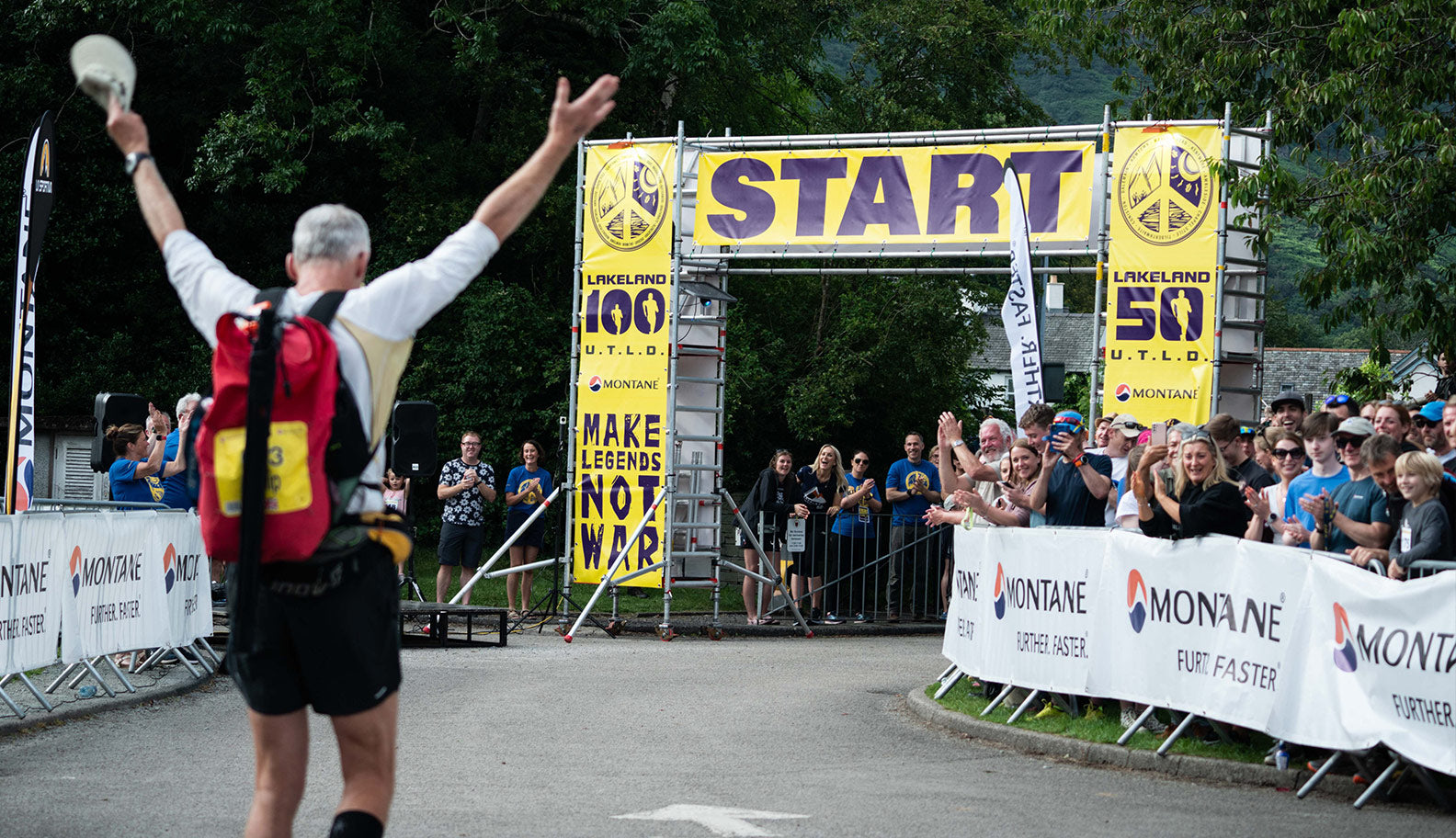With just a couple of months left until race day, and with block 1 (VO2 Max) and block 2 (Lactate Threshold) under your trail run shoes, by now you’ll be starting to really feel the benefits of our 24-week training plan! Ready for your next block? Okay, let’s go…
Hello everyone, I hope you enjoyed the second part of the training block which consisted of x2 4 week training blocks working on your lactate threshold. We are now into part 3, the last 10 weeks of the training plan, which will consist of x2 4 week training blocks focusing on endurance, followed by a 2 week taper period.
A quick recap
So if you cast your minds back to block 1, we focused on raising your vo2 max for 6 weeks. The workouts were high intensity and the overall volume was minimal. The sole purpose of the block was to simply get a little raise in your vo2 max. By bumping up your vo2 max first, this also raised up a few things which lie beneath it, like your lactate threshold. So when we went into the second block of training, the lactate threshold block, you would have had a higher lactate threshold to train at and develop. Also, in the threshold block the intensity decreased a little bit, which enabled us to begin to increase the overall volume. By training at and around this intensity, this is where we will have gotten the most significant fitness gains from.
But now as we get closer to race day, we are going to leave this block and move onto some endurance training, which will focus more on developing your endurance with some steady state workouts. The steady state workouts are less intense than the lactate threshold workouts, which will enable us to grow the overall volume some more.
Can you see what’s happened here? We have started off with high intensity and low volume and as we have progressed through the blocks, the intensity has decreased and each time the volume has grown. So by the time you're getting into this endurance block, you should find that your same easy run pace is now a little faster than it used to be, or running might feel easier and more effortless than ever before. We can now finish off the training by doing 8 weeks of work at this new level of fitness!
Endurance Training
Now that we are into the endurance training blocks, we are going to encroach into 3 hours and beyond for the long runs. Ive also made the main workouts each week, the steady state runs (SSRs) 1hr 15 mins long. So to accommodate for the extra volume we are going to drop the intensity on the intervals a little bit. Steady state intervals are a great way of keeping some form of intensity in the plan but without being too metabolically taxing, or tiring.
With regards to the SSRs and the intensity of them, these are at an RPE 7, so they are a little bit faster than an endurance run (or the long runs) but not quite as intense as a TR interval in the last block. The way I describe these to my athletes is to imagine they are cruising and that they are just a comfortable pick up. They shouldn't feel tough, be tiring or feel like hard work. Another way you could interpret them is to compare them to marathon race pace. If you can run a marathon in 3/4/5/6 hours then you should be able to hold this pace for 10-15 mins x3 within an easy run. When you do them, if they feel too hard you're probably going a little bit fast and you'll need to pull it back a little bit.
There’s a new training session in this next block of training too, hiking hill reps on a saturday! When you run an ultra, it makes sense to walk up any significant hills, saving the legs so that they keep in good enough shape to keep consistently running on the more runnable parts. You might think that hiking is too slow…the truth is it's only a little bit slower, but if you go training with a friend and you start hiking the hill and your friend keeps on running up the hill huffing and puffing, the chances are that you'll get to the top of the hill only 10-20 seconds behind them and you'll be a lot less out of breath, plus your legs won't be burning like theirs are!
You can really work on this hiking technique in training and over time you can get really quick and efficient at hiking the hills, all you need to do is keep practicing it. So Saturday's session is all about that. I want you to find a hill as big and as steep as you can and simply attack it by marching/hiking up it as hard and fast as you can.
You can use your hands to push up off your quads too to generate a faster pace and you can slightly lean over to do this but you don't want to be doubled over, when you see people doing it like that they are more often than not restricting their hip flexors from working, so try and stay more upright and you'll generate more force this way. When you get to the top, simply run back down to recover and go again until you reach the set run time, clocking up as much elevation as you can. The idea being that over time this will engrain into any hills you encounter on your long run the day after.
Strength Training
As we are now in the endurance block, we are going to focus more on muscle endurance. You may notice that the reps and sets have changed a little bit. This is because of the way we program the strength training plan for ultra runners. In the vo2 max block you did less sets and reps with a heavier weight, this is called a strength and power block. In the threshold block, you will move into a hypertrophy block. In this block, you will do slightly more reps and in turn, you'll need to use a slightly lighter weight.
Now that we are into endurance, you do more reps again and go a little bit lighter with the weights. As always, i’d highly recommend setting the bar low to begin with. So start with a nice, light, easy weight and over the course of 8 weeks slowly build up the weight so that by the end of the endurance block you are lifting close to your 5-15 rep max, or whatever the reps are for the exercise. To go straight in on week one at your 5 or 15 rep max is going to leave you quite sore and fatigued and with not much room to progress each week, so you'll plateau very early on. Remember we don't want to be body builders or powerlifters. This process wants to compliment your running, not set you back!
In the previous block, there were x2 strength and core combined sessions. Now that we are approaching race day or competition, we can reduce the overall amount of strength training and focus more on what’s important (the running!), but that doest mean that we just stop strength training. It means we simply pull it back to 1 strength session per week and focus more on maintaining that new strength we have. So instead of a second strength session, i’ve added in a core session instead.
Specificity and your long run
The Lakeland 50 is going to be really hilly and there will be all different kinds of hills. Some will go on forever and some will be over and done with as soon as they started. So you're going to need to get conditioned for these big hills. The easiest way to train for them is to make your long runs as specific as possible. The most specific way possible would be to get up to the lakes and get recceing the route in sections.
By doing that, not only are you getting the hill training in and building the elevation up in your legs, but you're also getting used to the technicality of the ground. The course is really diverse and you'll need to be pretty adaptable to running on a variety of surfaces. It doesn’t mean you wont finish if you have only ran on nothing but roads for the whole of your training plan, but by running on the route and finding out first hand what the underfoot conditions are like, this can really help you out to mentally prepare for what your going to be up against on race day.
Imagine having not run on slippery mud and wet rocks before and then coming across that on race day and then not having suitable footwear - it will really take the fun out of your race! So I'd highly recommend getting up for at least 1 long recce run, but the more you can do the better. Not only will it help you get elevation in the legs and to allow you to gain experience of the underfoot conditions, it will also allow you to plan how you intend to pace your race and figure out where it's going to need to be taken easy, and where you can make up some time, depending on your strengths and weaknesses.
Knowing what’s coming up on race day, as you run around the route, will make you feel better mentally too as you can keep ticking off sections in your head and visualise what’s coming up next- the familiarity can really help, especially if you’ll be finishing in the dark.
Practice fuelling
Hopefully in the last block, you started to experiment with food, sports nutrition and hydration options. Personally I use a mix of real food and gels. For real food I quite like rice crispy squares, milky ways, crepes, flapjack, oreos, wraps and sandwiches. For sports nutrition I use, precision fuel and the Maurten gels and voom bars. For hydration I quite like active root and skratch labs sachets and sometimes plain water with precision hydration salt caps.
Nutrition and hydration is very personalised so all I'm going to say is, have a play around with it and see what works for you by testing it out in training. If you would like some proper advice, then I'd highly recommend getting in touch with a sports nutritionist. Nutrition and hydration is an easy thing to get wrong and will play a big part in your race and will determine whether or not you make it to the finish.
Get familiar with your kit
For me, the most important parts of your race kit have to be your pack and your shoes! I'd recommend the Montane Gecko VP 12 (check out my gear review to hear about it in action). Your pack wants to be big enough to fit all the mandatory kit in and not be bursting at the seams and sit on your body well so it feels comfortable enough to run 50 miles in.
If you don't wear a race pack regularly enough, then I’d say any race pack will cause chafing to some extent initially when you first start using it. But as your skin adapts and gets used to it, it should toughen up and the chafing will stop. But if it doesn’t, or if it chafes you horrendously, then you should try a new pack instead that doesn’t do that to you. To help with the chafing until your skin toughens up or as a preventative, you can apply K tape to any high risk areas like the shoulders, collar bones or lower back etc.
When you find the right pack, then get used to where all the pockets are and how you're going to lay out your food, water, hats, gloves or mobile phone across all the accessible pockets on the front. By doing this in training and finding a specific place for all your belongings, on race day you should be able to go for a gel or some food and know exactly where it is, without even thinking about it or having to look down because you have practiced it so much on your long runs.
Same thing goes for shoes, you want to find a shoe that's really comfortable and doesn’t give you any blisters or issues. You'll also want to find a shoe that has a good balance of enough cushioning for 50 miles but also give you some good grip on a variety of surfaces. The only way you're going to fully know if you’ve made the right choice is by testing the trainers out on all your long runs and even better recceing the route so that you know they are suitable for the terrain. If you can't recce the route you need to find a comfy running shoe that is suitable for a variety of trails and offers grip in the mud, wet rock and has enough cushion to support your feet for 50 miles.
Taper
When all the hard work is done, all that's left to do is taper for 2 weeks. The sole purpose of the taper is to get rid of the accumulated training fatigue and any underlying training fatigue. The taper is not for trying to get any fitter. You'll notice there's less running, less workouts and more rest days, especially on race week.
Use the taper wisely. Use it to plan your race and to devise a plan, like how you're going to pace it and how you're going to fuel it. I'd highly recommend setting off nice and easy as opposed to trying to see how far you can get at a moderate pace and then hanging on for dear life in the second half. If you're feeling really good in the last 10-15 miles it would be much better to pick up the pace a notch at that point rather than trying to do it from the start and then the wheels falling off at the halfway point.
Also, really work on your mental game. It's going to be really exciting on the day but you need to remember that at multiple points you're going to want to quit! By mentally preparing for this in advance and having a “why” that you can bring up at each and every time you feel like quitting, it can really help you from actually quitting… it's not all going to be fun and games.
You need to remember it's going to get tough and not completely dismiss the fact and then it will not be a big surprise on race day and you can't mentally cope with it causing you to DNF. In the build up, tell yourself in the mirror “you can do this’, or when training, visualise yourself running in the race and envisage yourself being successful and finishing and someone putting a medal over your head.
Okay guys, that’s it. I wish you all the best of luck in your race and I hope it all goes well for you, but more than anything I hope you enjoy it!
This training plan was brought to you by #TeamMontane ultra running coach Howard Dracup. You can follow Howard on instagram @theultrarunningcoach, or find out more about his coaching on his website Mountain Strong Coaching.
The Lakeland 50 kicks off on the 27 July. Head over to our official event hub to learn more about this iconic ultra in the Lake District.














